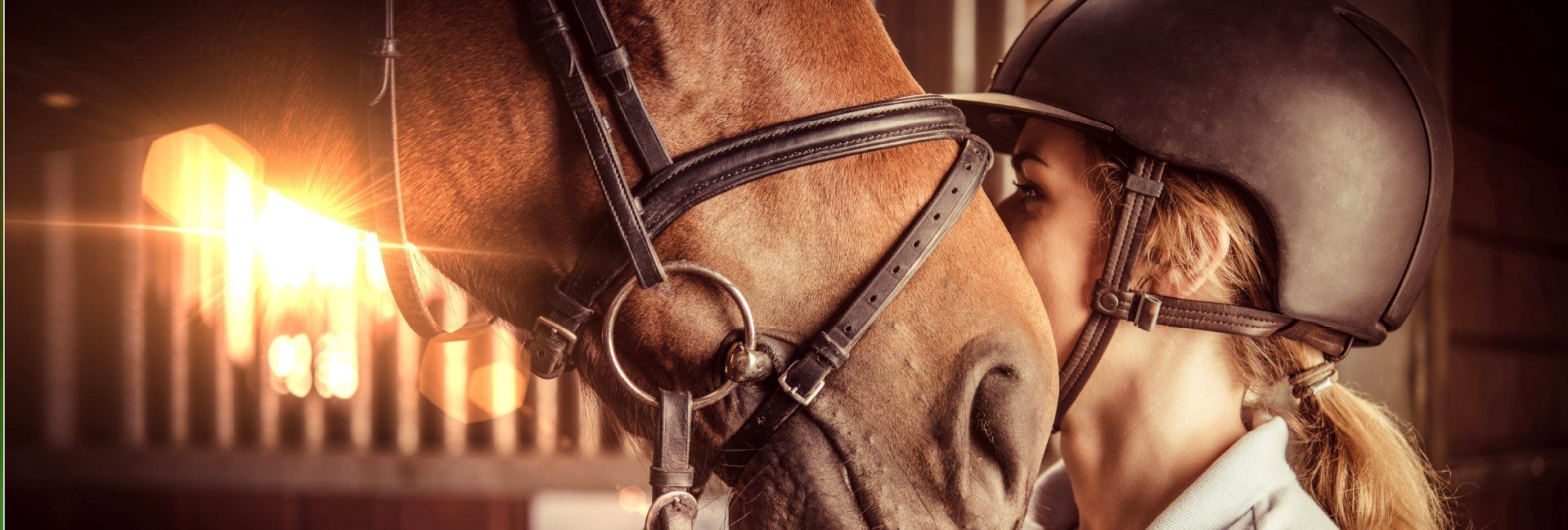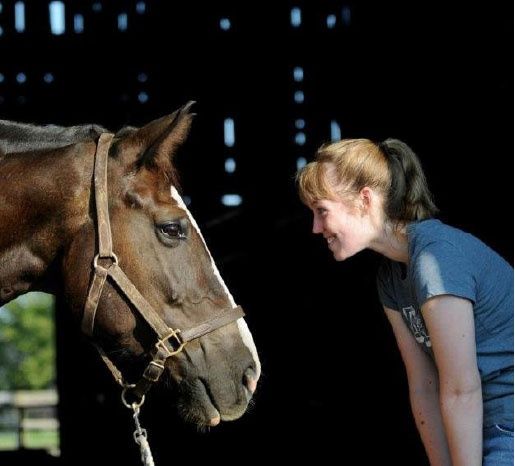Thanksgiving Thoughts, What I’m thankful for this year


Later this month we’ll all take a day (mostly) out of the barn to celebrate Thanksgiving. For many of us, it’s a good time to reflect on the year and what we’re especially grateful for. Often these discussions focus on big-picture things, but it’s also a good mental exercise to apply to any aspect of your life—including your equestrian life.
Here are a few horsey things I’m thankful for this year:
Round bales
My horse lives in a small paddock, which is great in the spring and early summer, because she puts on weight easily and the smaller available space keeps her from packing on the pounds with tons of fresh grass. In the fall and winter, though, the grass in her field is the first to be eaten down or die back. For many years, we threw flakes of hay from square bales out to her, but she’d scarf them down in a few minutes and then have nothing to eat for the rest of the day.
Round bales aren’t hard to find, but you do have to be picky about how you source them. They’re usually created for cattle, and cows can more easily and efficiently tolerate mold and poor quality plant material, so farmers aren’t always super-particular about how they store them.
Visit the farm you’re going to purchase from before you buy and inspect the hay quality. Is it rough and stemmy, or soft and greener? Round bales are rarely quite as soft as square bales, which are more commonly grown for horses, but you can probably find comparable quality.
Pay particular attention to how the hay is stored—if it’s sitting out in the rain on wet ground for a long period, mold could be a serious concern.
Mold is a major colic risk factor, so don’t be afraid to be picky
Also make sure your horse is up to date on vaccines, since there’s a slightly higher risk of botulism exposure in round bales, which can more easily have small animals like mice caught up during the baling process.
Hooflex and ThrushBuster
Either of these products are great treatments or preventatives for thrush, a bacterial infection that can sometimes develop in the crevices of the hoof. If left to fester (as it can easily do in deep crevices alongside the frog or between the heels) thrush can produce a dark, smelly residue and become very painful to the horse.
With all the rain we had this year, I found myself applying these as often as the label would allow to keep thrush away—and still, as I learned from experience, you have to be diligent about brushing or picking out regularly. This can be difficult when the sole grows out and those crevices grow deeper, so keep on top of your farrier schedule.
Bit warmers
This is a small thing, but who else feels a little guilty about putting a freezing steel bar in their horse’s mouth when it’s 40 degrees outside? I can’t say as my horse is excited to see the bridle, necessarily, but she’s a lot quicker to accept the bit when it’s warm.
Diet-conscious treats
In the past several years, I’ve seen more and more horse treats pop up on the market with a health angle. There are the usual no-sugar options, but there are also treats out there now which almost act as nutrition supplements. Buckeye Nutrition makes a great Reasons Joint Support treats which have glucosamine, chondroitin, and MSM in them, and Probios makes a treat designed to deliver probiotics to your horse. There are quite a few that offer added fiber or a mix of herbs as well.
Of course, we probably give our horses too many treats but it’s hard to change the habit of sneaking a cookie or two after a productive ride. The least we can do is make sure that cookie is as healthy as possible.
Really good veterinary advice
I’m lucky here in Central Kentucky to be surrounded by an incredible wealth of veterinary knowledge. My regular veterinarian has always been able to refer me to a range of experts if my horse needs something specific like troubleshooting a difficult lameness or a recommending chiropractic adjustment.
However, not everyone has that large an equine veterinary community where they keep their horse. That can make it even easier to turn to “Dr. Google” and take a stab at diagnosing a problem yourself, rather than paying your vet a farm call to come take a look.
I’m firmly of the opinion that despite the useful information on the internet these days, nothing can take the place of a person with plenty of equine medical experience who knows your particular animal
Remember that horses are individuals, as humans are—comparing notes with a stranger on social media is never going to be as effective or efficient as getting the perspective of an experienced, professional veterinarian who has eyes and hands on your horse.
A quiet ride at sunset
Sometimes it can be hard to live in the moment with your horse; you’re conditioned to be thinking about the next training challenge, next competition, or next set of chores you need to do around the barn. Taking a breath at the end of a great ride is so helpful for keeping yourself present with your horse.
I’ve had a few friends who have had to say goodbye to their older horses recently; it’s something that never gets easier to do, no matter how long you’ve owned horses. As heartbreaking as it is, it’s also a good reminder to appreciate those quiet moments or small training triumphs with your horse.
You’ll never be sorry you took a few extra moments to feel thankful for everything they give you.
Tags:Horse Sense

Acreage Life is part of the Catalyst Communications Network publication family.














